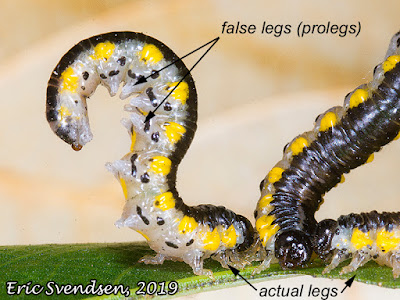Pale Swallowtail Butterfly
 |
| Pale Swallowtail Butterfly |
Swallowtails are most easily identified by the pair of slipper-like appendages jutting off the hind wing. A large butterfly, swallowtails can lose these projections if attacked by a bird or other predator. I have seen them successfully flying about with over half of one of their hind wings gone. As an insect, butterflies have four wings, but the fore and hind wings are so seamlessly paired that they appear as one. Bristles at the front edge of the hind wing interlock with hooks at the back edge of the forewing and facilitate unification. Who knew that butterflies were the first to use velcro!
I have tried to follow butterflies in the field as they flit from place to place, but have largely been unsuccessful. The best success I have had has been when I have come across a patch of flowers which have recently bloomed. Nectar, their fuel of choice, is abundant and they can acquire what they need in little time. I have to move slowly though, as any sudden movements will cause them to take flight. Sometimes they just move to a neighbouring bloom, though they could leave the area entirely.
With them being so large (for an insect), special equipment is not necessary. A modest telephoto lens (relative focal lengths between 200 - 400 mm) which has the capacity to focus modestly closely will allow you to capture their images without disturbing them. I chose faster shutter speed where possible and keep any vibration mitigation technology turned on to maximize quality. The camera was set to an ISO of 400, which gave me a decent shutter speed (1/250th of a second) - the aperture was f/10. I was using my 80-400 lens, which has lightning fast focusing abilities. The high cloud day meant there were no harsh shadows.
Thanks for reading. www.ericspix.com



Comments
Post a Comment